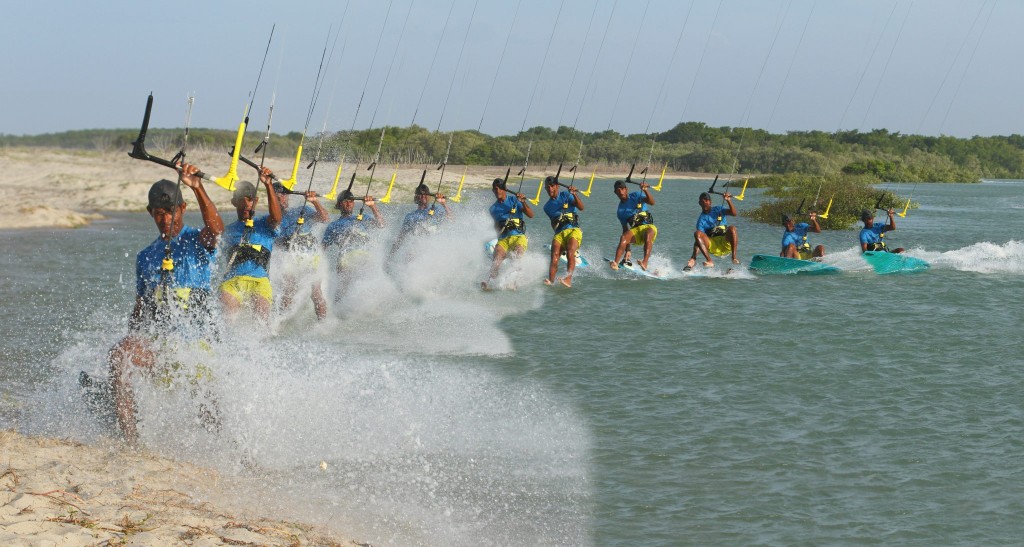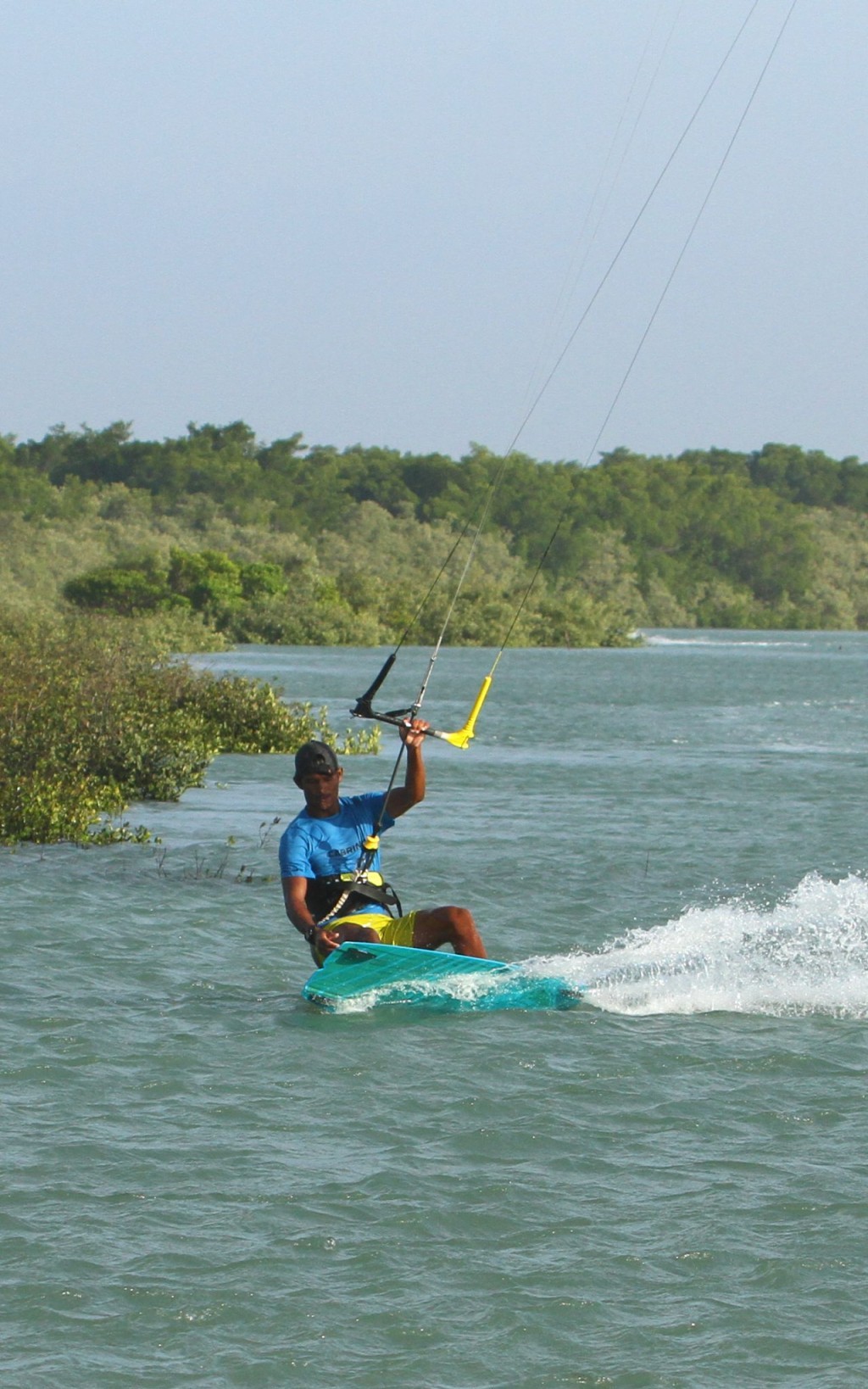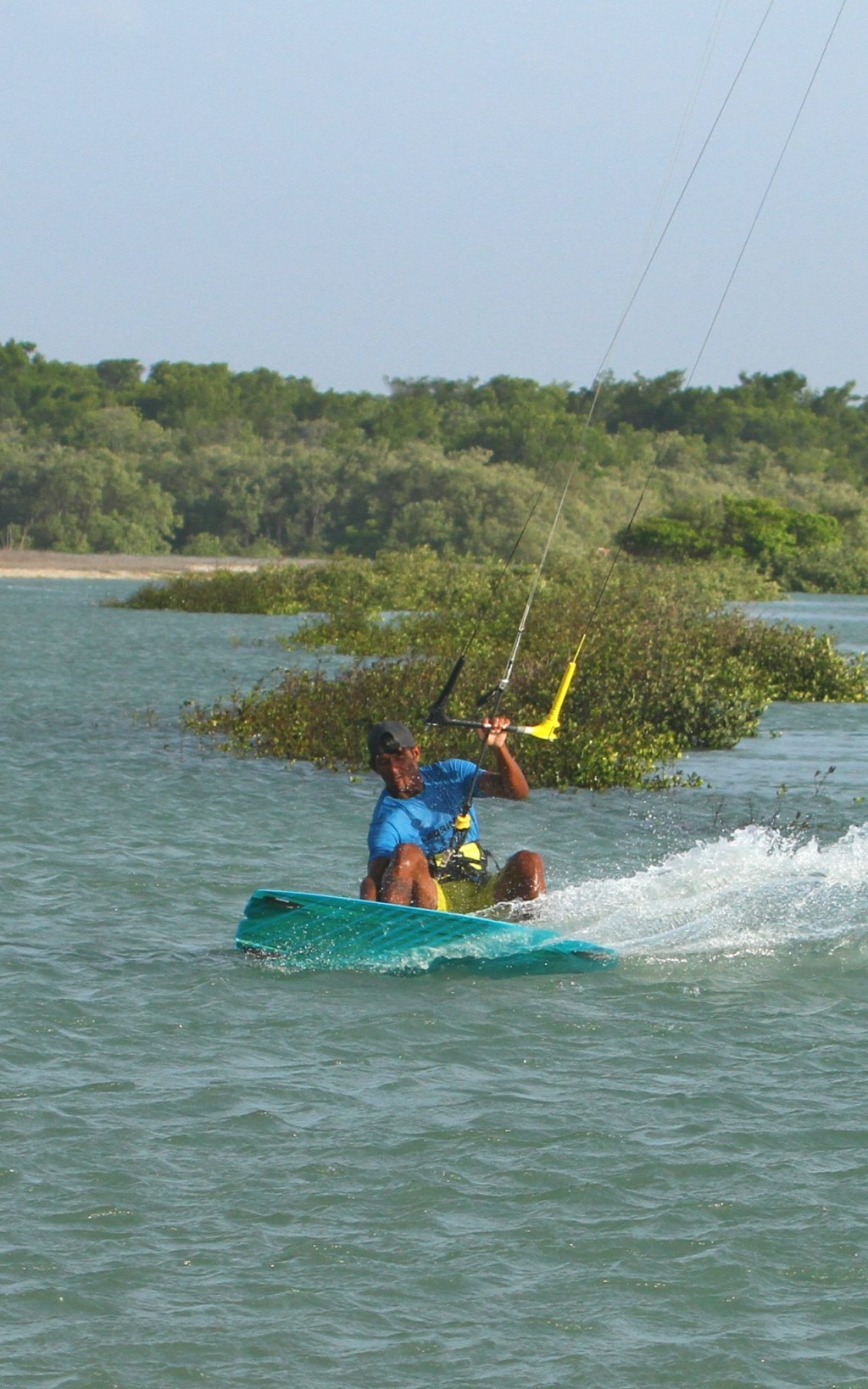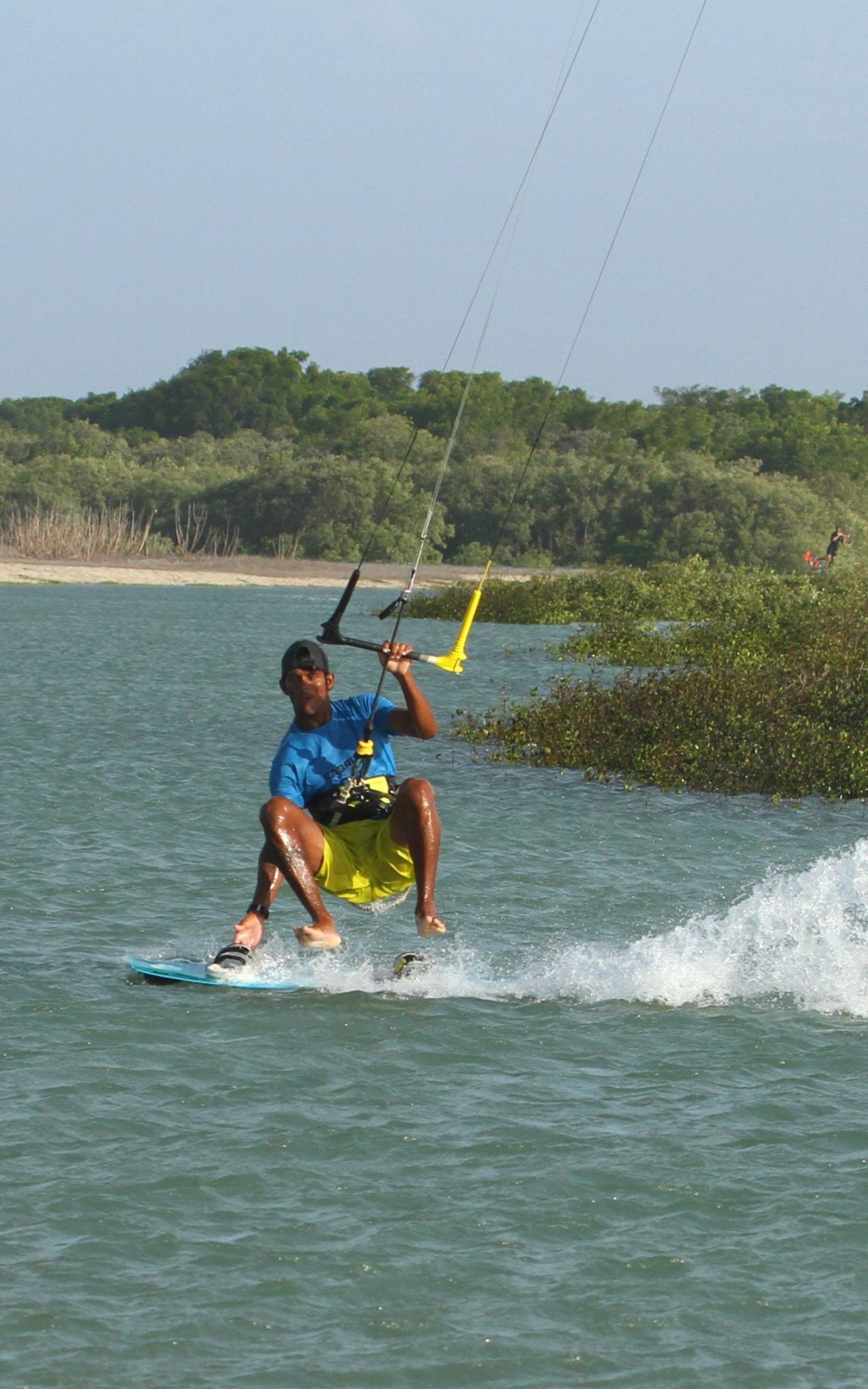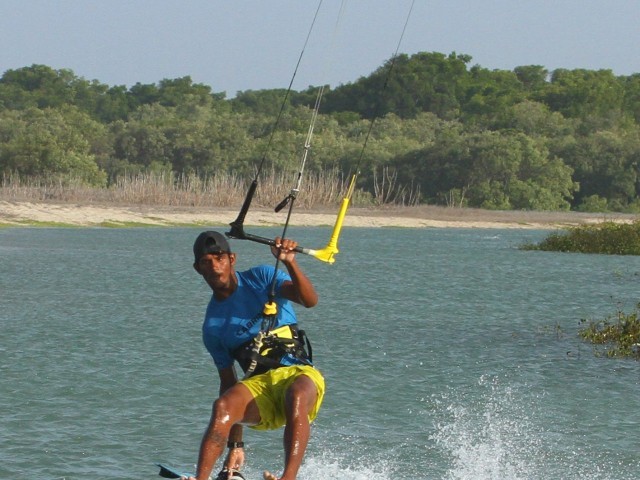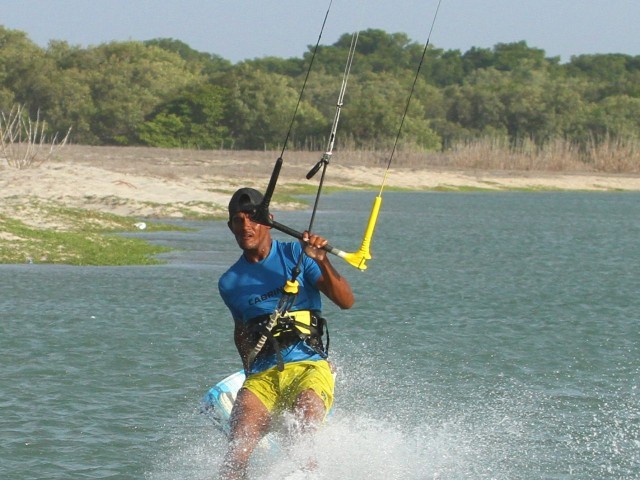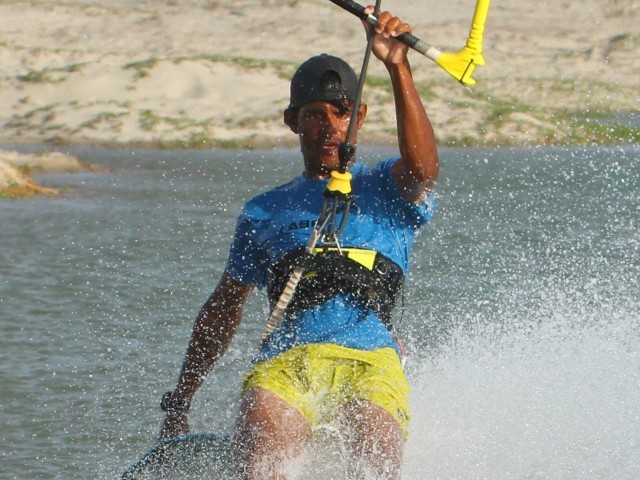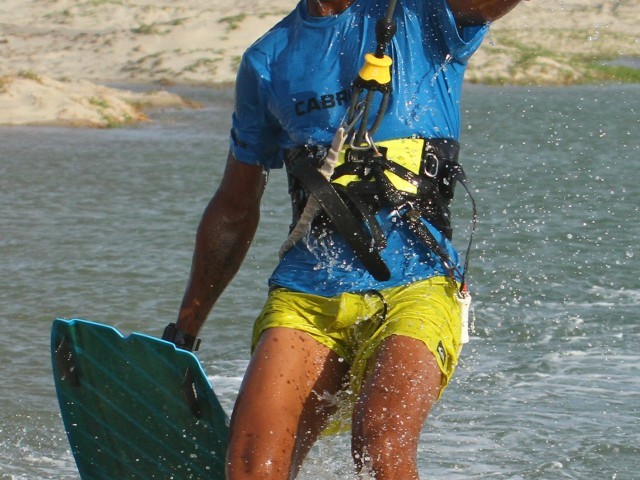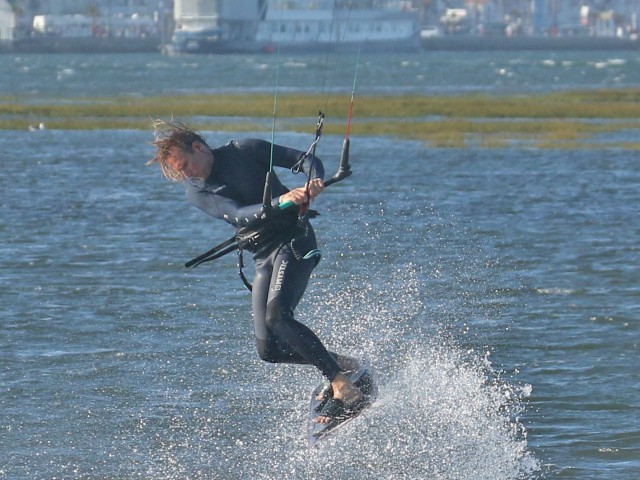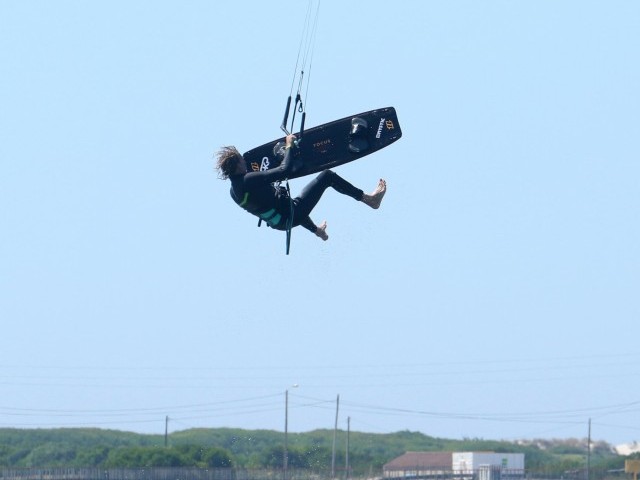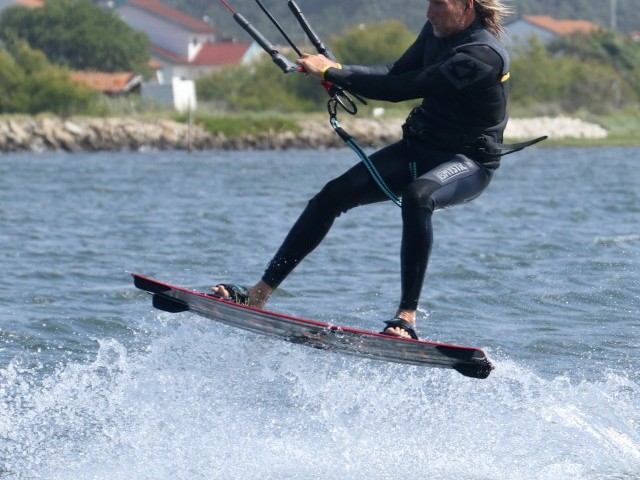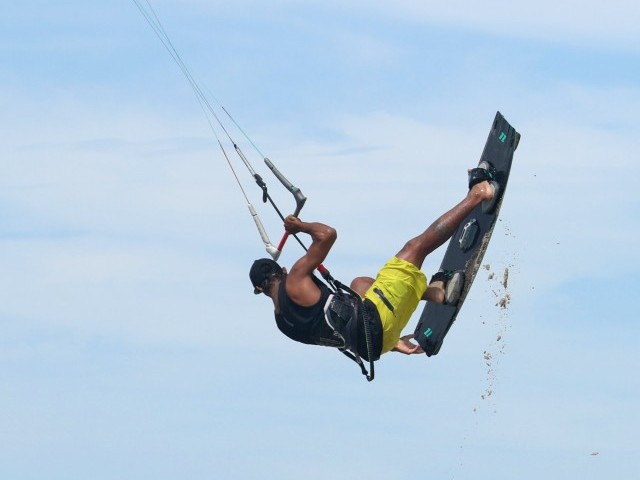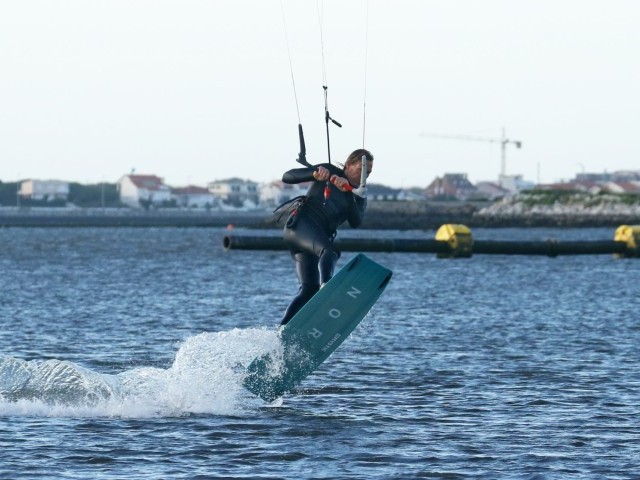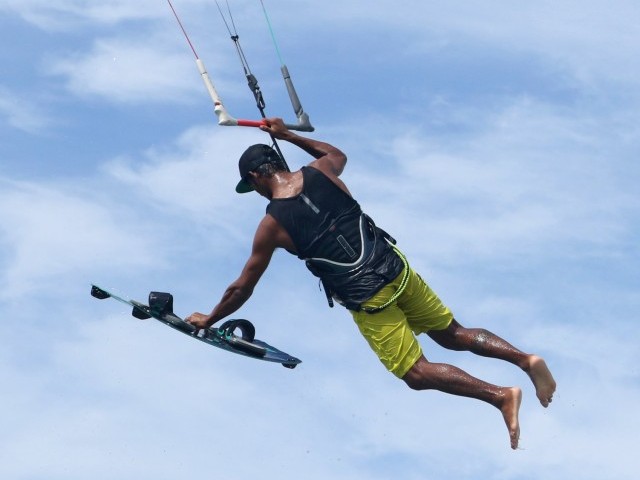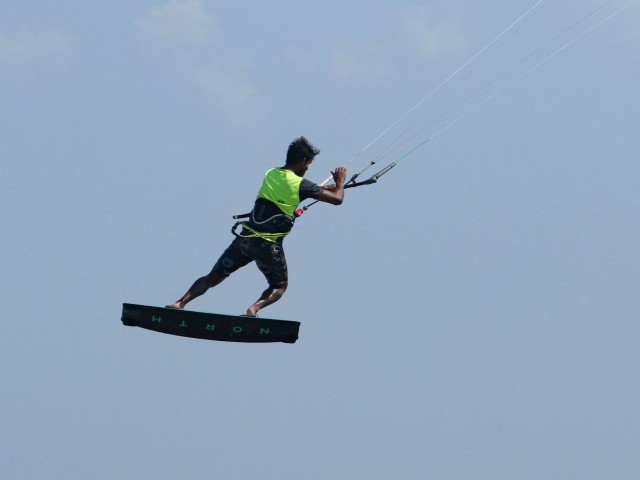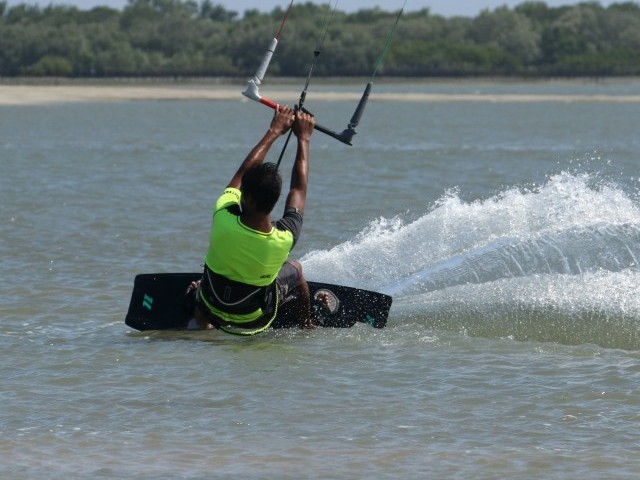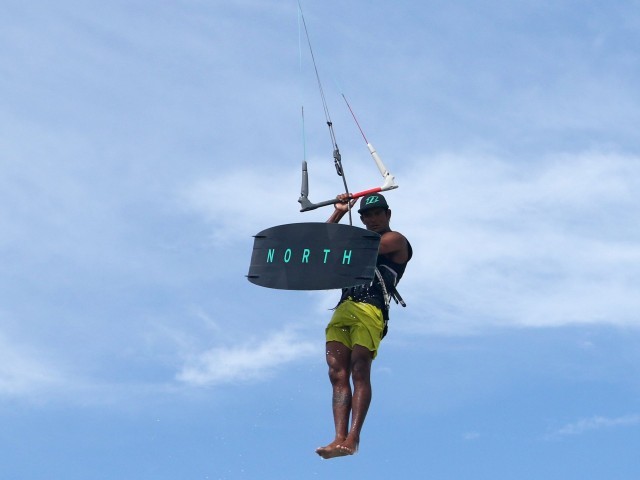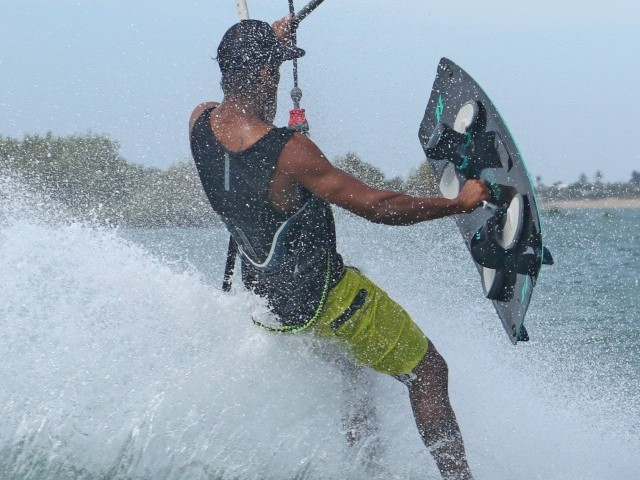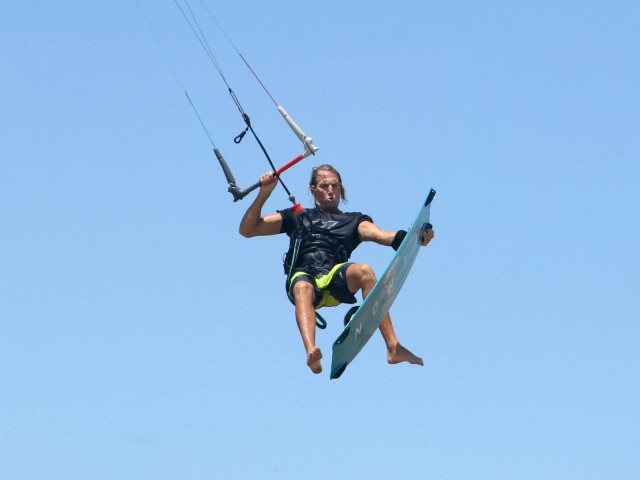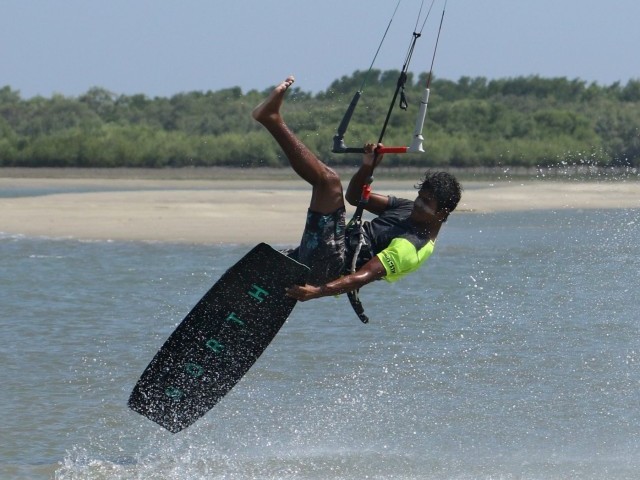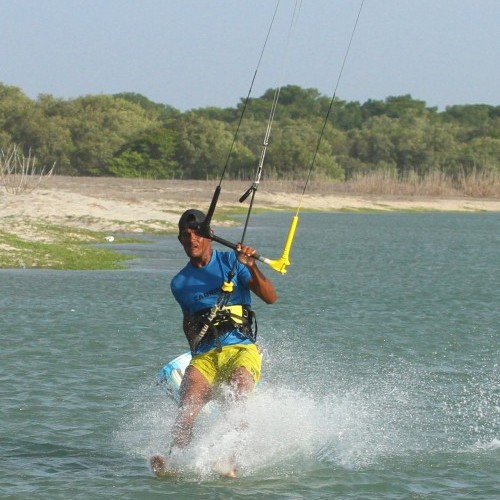
Barefoot Water-ski Dismount
Technique / Advanced
Introduction
Unsurprisingly here is another fun filled move from Heliarde. The water-ski or barefoot dismount. Not only does this look the absolute shizzle, but it’s also a good way to train yourself for the joys of the Jesus Walk should you be so inclined. The beauty is that even if you consider yourself to be on the wrong end of the flexible scale, getting the board off here is not too hard, and there’s no reason to get it back on – everyone’s a winner babe and that’s no lie!
This is another move from the support style stable. Therefore, if you have any experience at Dark Sliding, Back Loop Hand Wash, Foot Wash etc. you’ll find the kite dynamics similar and will be able to concentrate on the board and barefoot skiing. That said as long as you have the inclination this one is for you. One last word before we have a look, stating the obvious perhaps, but when you learn this there is no need to finish standing on the beach with a smile on your face. Best get it nailed with a deep water sink rather than risk a sandy face plant.
The Approach Pic A.
This move is all about maximising your time being supported by the kite. As such a few things are a must to give yourself a good chance. First off you need power in your kite. For sure when you have these moves down you can get away with less, but they are easier and can be drown out more with plenty of oomph. And to make it more comfortable on the bar it’s helpful to have your sweet spot trimmed out away from you. A larger kite will also make things easier as it won’t move so quickly and will give you more lift. Other than that, you need tension in the lines and you want to be low down near the water and your board for the grab. The final part of prep is to loosen your feet in the straps, by sliding them back a bit. You can make it easier still by loosening your straps to help with learning this. If you look at the pic you can see that Heliarde comes in with his kite high, around 12:30 (11:30 if going left), his hand is centred on the bar and his sweet spot is trimmed out. He’s edging hard which gives him tension and his weight is dropped back and low, which means he can resist the upward lift of the kite and he is low down close to his board. As he approaches he starts to drift his kite up slowly and takes his front hand off the bar.
Your Friend the Strap Pic B.
Once the kite starts lifting you need to think about getting the board off your feet. In preparation for this you’ll need to shift your hips back to unweight the front foot slightly so that you can slide it out of the strap a bit more to give you enough room under the strap to grab onto as the front foot strap will be your handle. This is what makes this more achievable, as there is no need to pop, bring the board up and grab the rail or handle. Only a matter of grabbing the front strap:) Here Heliarde as squatted right down, the nose of the board is lifting slightly as his weight is towards the tail to lighten his front foot. As it slides back a tad he can get his fingers under the strap by leaning his shoulders forwards and reaching his hand down. Once you can reach the strap this move is well within your reach….
Free Your Feet Pic C.
This is the crux of the move, freeing your feet. If you’ve already pulled them back on the pads it should be a doddle. Lifting your heels, pulling on the bar and holding your front arm forwards should be enough to lift your forwards and out of your straps. The challenge is to keep a grip of the front strap whilst deliberately loosing contact with the board. By pulling on the bar the kite will both lift you and pull you downwind which will result in you being pulled across the board. As long as you hold it forwards with your front arm, the board will stay put and you’ll be free. You can help by lifting your knees to completely unweight your feet. At this stage Heliarde has his knees held high, he’s pulled on the bar so the kite is supporting him and his fingers are hooked under the front strap.
Pre-Ski Pic D.
Once you’re out of the straps you need to get ready to barefoot, whilst pondering the kite. Depending where your hand is on the bar, how hard you pulled down on it, where you started the kite and what size you’re on, will dictate where the kite is now. Ideally you want the kite to be near twelve, not too far back in the window. If you look at the pic Heliarde is readying himself for the barefoot skiing part. He’s got a good grip of the board which he’s pulling along behind him and he’s extending his feet out in front of him, straightening his legs so that they’re ready. It’s important to keep the bar in on the sweet spot as you need to keep the support and lift coming from the kite. However, you don’t want the kite flying back across the window so concentrate on trying to keep the bar level.
Barefooting Pic E.
This is it, you’re officially barefooting. Almost a lost art, but always looks spectacular. If we may go off at a slight tangent, the Raley pre-empted wakeboarding. Watch the old barefoot skiers hitting the jump ramp, now that was the original superman! Once your feet are on the water you will be creating resistance. Keep your toes up and your legs straight so that you don’t buckle and stop, imaging that you’re trying to push your feet out in front of you. Due to the resistance, you’ll need a bit more pull from the kite so feel free to pull the bar in further, but don’t steer the kite further – this isn’t the time for a cheeky kiteloop!!! Looking at the pic you can see that Heliarde is skiing just fine, bar is in and board is bouncing along behind him - perfeito. Remember that your aim here is to skim across the surface, so you should be on the water rather than in the water.
Slowing Down Pic F.
This part is for once you have this nailed and actually intend to walk casually onto something solid downwind of you. Up until this point the chances are that you’ve come to rest naturally, losing your speed and slowly sinking. Once you can keep going you’ll need to slow down at will so you don’t just career up the beach at Mach 10. Slowing down on your feet is much the same as if you have a board on your feet. Your feet are already resisting/edging, so your only option is to let the bar out, dump the power and thus slow down. As Heliarde approaches the beach he slowly sheets out to calm his pace. Don’t just fully dump the power as you’ll stop dead – unless of course you have to.
Happy Landing Pic E.
If all goes to plan you’ll have just enough momentum to pitch you upright onto your feet so that you can casually wander up the beach whilst your sinuses drain.
Top Tips
This is definitely a move to work on in stages. First off get used to keeping the kite relatively still. It should drift, but at a snail’s pace. Whilst working on the kite also work on getting your hand on the strap. It’s very tempting to let the bar out to reach the strap, but this will then allow the kite to move further behind you, so keep the bar in on the sweet spot. Once you can get the board off your aim is to get the barefoot sorted. You can then work on bringing more speed into the move to lengthen your ride. If you get all of the above nailed then bring it onto the beach, as long as no one else is endangered by your actions and the beach is soft. Finally, just in case you’re in any doubt, you will be moving on a downwind trajectory doing this, so keep it in mind.
Now have a good look at the sequence and videos to emulate this move in your own way.
Common Problems
No support from kite when you try and take board off. Assuming that you have enough power this will be a question of tension in the lines – you need more. Try coming in with more speed, make sure you keep the bar on the sweet spot and edge hard with your weight low. It’s also possible that your kite is not high enough in the window so be sure to drift it up.
Can’t get board off. Try loosening your straps and wiggling your feet out slightly on your approach. If you have hold of the strap but can’t get out you have possibly flattened the board off, therefore losing tension and lift. If you edge you’ll be pulled out of the straps as you lift your knees and pull in o the bar.
Stop as feet go in. It is a balancing act between speed, resistance and lift. You’ll need to feather the bar to find a good fit, but it’s worth remembering that you are not really barefooting, you are flying with the kite and just happen to put your feet on the water. As such the kite and lift are most important so use the bar to either lift you up if you’re slowing or drop you if you lose contact with the water.
Keystones
- Loosen feet, edge low and drift kite
- Drop weight and grab strap
- Lift knees and pull on bar
- Extend legs forwards and lower feet
- Use bar to lift or lower to just maintain contact with water
This technique article was in Issue 68 of IKSURFMAG.
Related
By Christian and Karine
Christian and Karine have been working together as a coaching team, running improver to advanced kitesurfing clinics since 2003.






